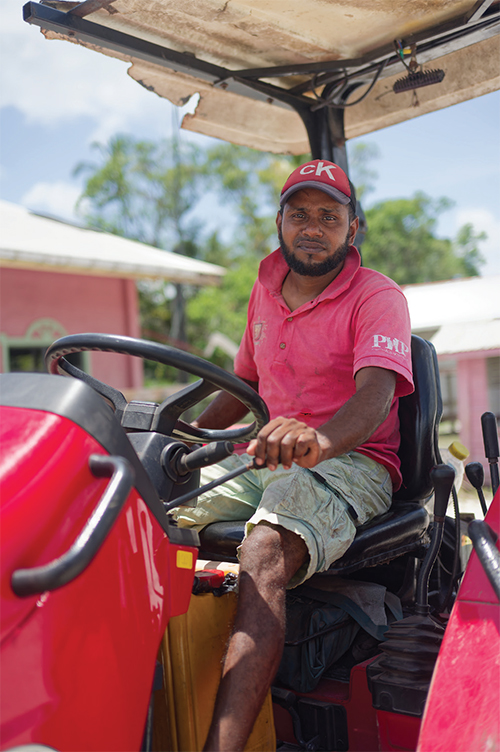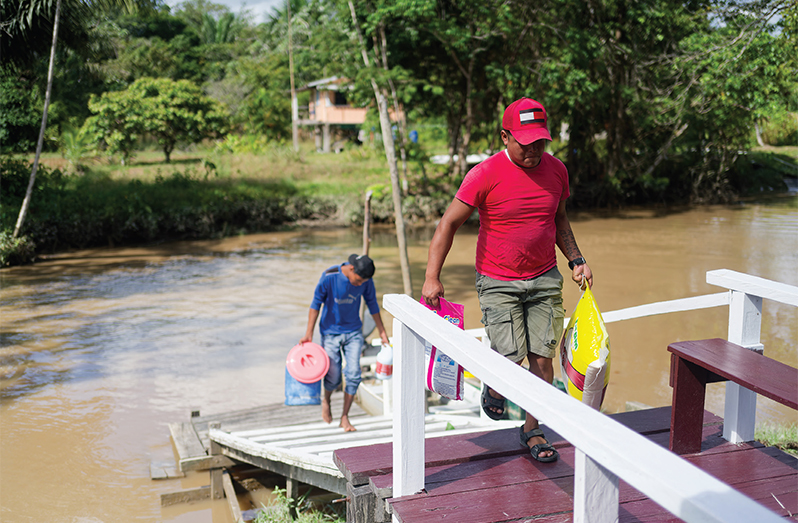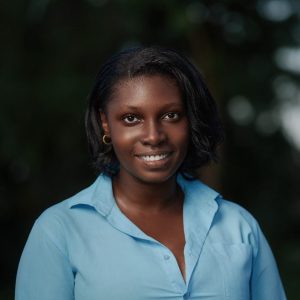
The rich past and promising future of Bethany mission
IT is said that if we look hard and long enough, our past holds the key to our future. This is a sentiment the people of Bethany live by. As one of Region Two’s oldest Amerindian communities, Bethany has preserved its past. Moreover, the community has been dedicated to moving in an upward trajectory. Much of the village’s history could be found safeguarded by the village’s leaders.
Bethany’s Beginning
Sonia Latchman, the current Toshao of the community, shared some background and history about the village. The name ‘Bethany’ is of a Biblical origin, meaning “House of Figs”. The name was given by the Vanlange family who first occupied the area around the 1920s. They were Seventh-Day Adventist Christians. Mr. Vanlange leased this area from the then-British Guiana Forestry Commission to participate in logging activities. During this period, there were two houses in Bethany owned by Mr. Garvan Vanlange and his brother-in-law Mr. Jack Fiedtkou who later became the church’s leader. As a businessman, Mr. Vanlange employed Mr. Morgan and Mr. Cobis. Today, the community’s boat landings were named after those men.
The village council has managed to retain family records from decades ago. Most of Bethany’s native people originate from just a few families. Families were living across the savannah at the time, the Patons and the Jacks. There were also the Wilsons and Russells. In those days, just a few people were living along the creek. Before this period, there was a settlement at the mouth of the Essequibo River in a village now known as Airy Hall. The community’s population was later impacted when an epidemic struck the settlement, and many people died. Bethany was established as a community in 1969 and the people obtained the Certificate of Title to their land on October 29, 2010.
Livelihood and culture in Bethany
Bethany’s nature of sharing is truly tradition. According to records, the community has a unique sense of community. Whenever farmers reaped a good harvest, they would share their produce in the community. Cutting farms was never an issue in those days. People would come together to cut farms and pull logs with what they called a ‘Muster’. After the work is completed for the day, the person who they worked for would sponsor the meals.
After such hard work, they usually celebrate with fermented cane juice or some other fermented drink. They may have music supplied by singers and guitarists, which will go until the wee hours of the morning. As the church’s influence grew and technology emerged, these practices were done away with. As machinery was brought into the village, production increased. The village benefitted greatly from forest products. Although the forest is depleting, the village was able to acquire a lease from the Guyana Forestry Commission, which may soon become the village extension.

Future endeavours for the community of Bethany
In a community greatly dependent on agriculture, such as Bethany, tractors are a must. The village has designated tractor drivers. Among them is Councillor Dave Rajkumar. With his mom from Truly Island, Dave settled in the community at a young age and has grown up in the village. “I came here from the age of six. From then to now, it is now much easier. I would say that there are a lot of improvements,” he stated. Dave is also a true reflection of entrepreneurship in the community. Dave owns a boat service, and he wears many hats. As a business person, one of the biggest developments in Bethany has been economic growth. With new resources, work in the community has come at a lesser cost. As Dave explained, “The economic situation has greatly improved because of the finance we got from the government for things like the tractors. We also have new boats, a pontoon.”
The addition of boats, tractors and pontoons has greatly impacted the economic situation of the community. The council has some big plans slated. As Dave explained, Bethany is now home to a women’s group that is working on preserving traditional Amerindian crafts. Tourism, travel, health and education are all things that the village has plans for. Wells, more public health buildings and improved infrastructure are just a few. Dave shared that his community is just one among the hundreds of villages set on carving a path for themselves and are dedicated to doing so little at a time.




.jpg)










